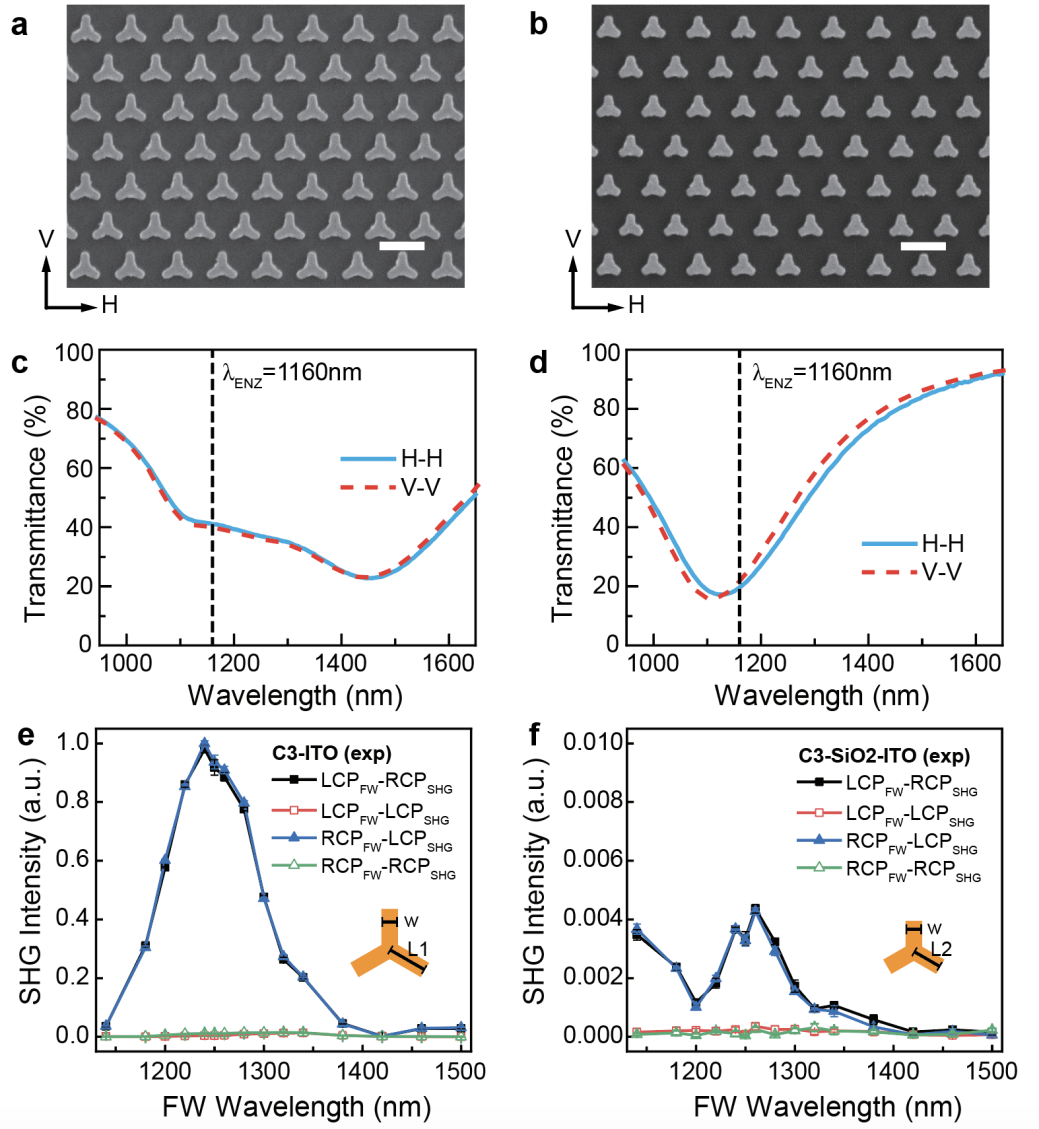Research led by scholars Southern University of Science and Technology (SUSTech) has taken the first steps towards the potential development of a new platform for high-efficiency nonlinear frequency conversion. It could lead to the miniaturization of nonlinear optical devices that are important for optical information processing and switching.
On June 4, Associate Professor Guixin Li led an international research team to publish the progress of their research in the high-impact academic journal, Nano Letters (IF =11.2). The paper was titled “Giant enhancement of second-order nonlinearity of epsilon-near-zero-medium by a plasmonic metasurface.”
Nonlinear optical processes have vital applications in frequency conversions, all-optical switching, and many other fields. Conventional nonlinear optical crystals have achieved great success in the field of frequency conversion. However, with the rapid development of optical computing and quantum optical chips, its integration into nonlinear optical functions on a compact chip has become a hot field for optoelectronic scientific and technical research.
In recent years, photonic metasurfaces represent a new platform for manipulating the degree of freedom of light. The optical losses of metallic metamaterials limit their practical applications. To solve this constraint, scholars have explored different physical mechanisms to improve the nonlinear optical conversion efficiency of the meta-atoms. For example, by using the electric and magnetic resonances in plasmonic and dielectric meta-atoms or integrating the organic semiconductors and quantum wells into plasmonic metasurfaces can significantly improve the nonlinear optical efficiencies.

Figure 1. Schematic illustration of second harmonic generation from hybrid plasmonic-ENZ metasurfaces. (a) C3-ITO metasurface and (b) C3-SiO2-ITO metasurface
Epsilon-near-zero (ENZ) materials represent a new kind of promising nonlinear optical media. ENZ behavior is observed at the onset of a plasmonic response in metals or highly doped semiconductors, such as indium-tin-oxide (ITO) and aluminum-doped zinc oxide (AZO). It can be engineered in metamaterial composites. The ENZ materials have been widely used to enhance SHG and THG radiations, known as the Kerr effect. The enhancement of the ENZ medium field is due to the continuity of electric field components parallel to the interface. The electric field components parallel to the interface poorly penetrate the ENZ medium and weakly participate in the nonlinear optical processes.

Figure 2. (a) and (b) Scanning electron microscopy images of the fabricated C3-ITO (a) and C3-SiO2-ITO (b) metasurfaces (scale bar: 500 nm): 30 nm-thick Au meta-atoms are arranged in a hexagonal lattice of a 550 nm period. (c) and (d) Transmission spectra of the metasurfaces measured for horizontally (H) and vertically (V) polarized light. (e) and (f) Nonlinear optical properties of the Plasmonic-ENZ metasurface
The research team designed a hybrid metasurface, which can be better thought of as a nano-antenna array. It is similar to a radar system and is made up of plasmonic nanostructures on an ENZ nanofilm. It would generate strongly enhanced SHG at the normal incidence mode. They found that the gold (Au) meta-atoms on an ITO layer provides approximately a ten-thousand fold enhancement in SHG at the fundamental wavelength.
Their findings also indicate that the symmetry selection of nonlinear optics also works in the plasmonic-ENZ system. Their proposed hybrid ENZ metasurface provides a platform for ultra-compact and efficient nonlinear optical sources.
SUSTech Research Assistant Professor Junhong Deng and graduate student Yutao Tang are the co-first authors of the paper. Dr. Guixin Li and Kings College London Professor Anatoly Zayats are the co-corresponding authors. This work is supported by the National Natural Science Foundation of China and the Guangdong Provincial Innovation and Entrepreneurship Project.
Article link: https://pubs.acs.org/doi/10.1021/acs.nanolett.0c01810
Proofread ByYingying XIA
Photo ByDepartment of Materials Science and Engineering, Yan QIU